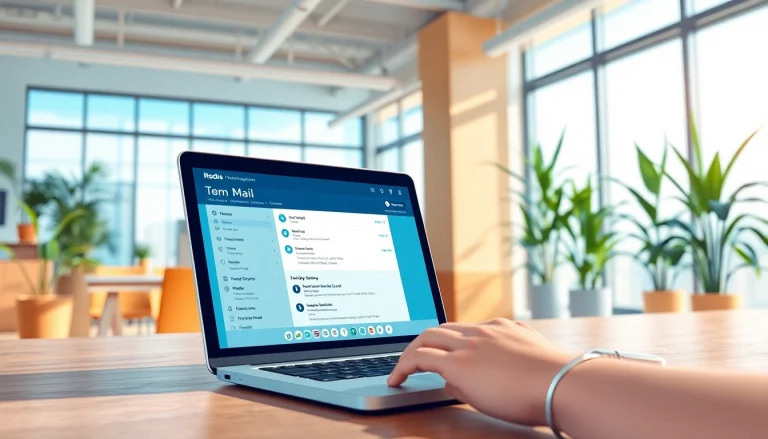The healthcare industry has undergone a digital revolution, and one of its most significant advancements is Eprescription app development. In the early days, electronic prescribing was simply about replacing handwritten prescriptions. Today, it’s about creating smart, secure, and fully integrated platforms that empower healthcare professionals to deliver faster and safer care. In 2025, Eprescription App Development continues to evolve, driven by innovations in artificial intelligence, cloud technology, and regulatory compliance. For leaders like D.A.W. Systems, Inc., this evolution represents a commitment to modernizing the way medical and veterinary providers manage prescriptions.
The Early Stages of Eprescription App Development
The first generation of Eprescription App Development focused on basic electronic transmission of prescriptions between healthcare providers and pharmacies. These early solutions helped eliminate issues like illegible handwriting and transcription errors. However, they lacked real-time integration with drug databases, clinical decision support tools, and patient history systems.
As healthcare demands grew, Eprescription App Development expanded beyond digitization. Developers began building smarter apps capable of managing medication histories, tracking refills, and integrating with Electronic Health Records (EHRs). This laid the foundation for the intelligent prescribing systems we see today.
Technological Shifts Driving Modern Eprescription App Development
Cloud Computing and Interoperability
One of the biggest breakthroughs in Eprescription App Development has been the adoption of cloud-based architecture. Cloud platforms allow healthcare professionals to access prescription data securely from any location or device. This enables physicians, veterinarians, and pharmacists to collaborate efficiently in real time.
Through Eprescription App Development, cloud integration also ensures interoperability — allowing systems to share information across different healthcare networks. Companies like D.A.W. Systems, Inc. have leveraged this technology in ScriptSure to enable seamless connections between clinics, pharmacies, and insurance providers.
Artificial Intelligence and Predictive Analytics
AI has redefined Eprescription App Development in 2025. Machine learning algorithms can analyze patient data and recommend optimal medications or dosages. These systems help prevent drug interactions, flag high-risk prescriptions, and provide alerts for alternative treatments.
Predictive analytics takes it a step further. By studying prescription patterns, Eprescription App Development tools can forecast drug shortages, identify overprescription trends, and enhance overall patient safety.
Mobile-First Design
As mobile healthcare grows, so does the need for apps that support prescribing on the go. Mobile-focused Eprescription App Development allows clinicians to send prescriptions directly from their smartphones or tablets, whether they’re in hospitals, clinics, or even remote veterinary settings. This flexibility enhances accessibility and improves workflow efficiency.
Compliance and Security in Modern Eprescription App Development
In 2025, the regulatory landscape for Eprescription App Development has become more stringent. Compliance with HIPAA, DEA’s EPCS (Electronic Prescribing for Controlled Substances), and state-level regulations is mandatory.
Developers must implement strong encryption, authentication, and audit trails to protect patient data. Every transaction in Eprescription App Development must be verifiable, ensuring transparency and accountability.
For example, D.A.W. Systems, Inc. has integrated advanced compliance measures into its ScriptSure platform, ensuring that prescriptions for controlled substances meet all legal and security requirements without compromising ease of use.
Integration with Other Healthcare Technologies
Modern Eprescription App Development doesn’t function in isolation. Integration with EHR systems, telemedicine platforms, and pharmacy management software has become a defining characteristic of advanced prescribing solutions.
Telemedicine Integration
With telehealth services expanding globally, Eprescription App Development now supports remote prescribing, enabling physicians to send prescriptions to pharmacies during virtual consultations.
Pharmacy and Insurance Connectivity
Through real-time insurance verification and formulary checks, Eprescription App Development ensures patients receive medications covered by their plans while avoiding costly errors.
This interconnected environment creates a smoother experience for both providers and patients, strengthening the healthcare ecosystem as a whole.
Veterinary and Specialized Eprescription App Development
While much of the focus has been on human medicine, Eprescription App Development has also advanced in veterinary healthcare. Veterinary professionals now rely on electronic systems to manage prescriptions for animals efficiently.
D.A.W. Systems, Inc., through ScriptSure, supports both human and veterinary medicine, allowing users to handle species-specific dosing, controlled substances, and compounding requirements—all within a single, integrated platform. This expansion reflects how Eprescription App Development is adapting to the diverse needs of the healthcare industry.
Challenges in the Evolution of Eprescription App Development
Despite incredible progress, Eprescription App Development still faces a few challenges:
- Interoperability gaps between older healthcare systems
- High costs of continuous updates to meet compliance standards
- User training for healthcare professionals adopting new technologies
However, innovative developers are addressing these issues by designing intuitive interfaces, offering training modules, and automating compliance updates. These improvements ensure that Eprescription App Development remains both accessible and efficient.
The Future of Eprescription App Development in 2025 and Beyond
Looking ahead, Eprescription App Development is moving toward even greater automation, intelligence, and integration. Developers are exploring blockchain for secure prescription verification, AI for personalized drug recommendations, and IoT devices for real-time medication tracking.
In 2025, Eprescription App Development has evolved from a convenience to a necessity—an essential part of the modern healthcare infrastructure. Companies like D.A.W. Systems, Inc. are leading this transformation by building platforms that meet the complex demands of clinical and veterinary medicine while staying at the forefront of innovation.
Conclusion
The evolution of Eprescription App Development reflects the healthcare industry’s drive toward efficiency, safety, and patient-centered care. From its early beginnings to today’s intelligent, cloud-based platforms, electronic prescribing has become an indispensable tool for modern medicine.







![Carpet Cleaning Dubai: Trusted Carpet Cleaning Dubai Company Since [Year]](https://ratelcrypto.com/wp-content/uploads/2025/10/how-to-clean-a-carpet-at-home-675c497f70d67-300x200.jpg)











![Carpet Cleaning Dubai: Trusted Carpet Cleaning Dubai Company Since [Year]](https://ratelcrypto.com/wp-content/uploads/2025/10/how-to-clean-a-carpet-at-home-675c497f70d67-768x512.jpg)
+ There are no comments
Add yours